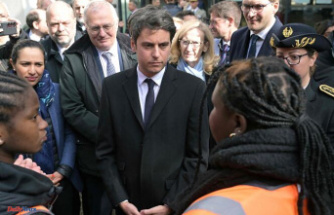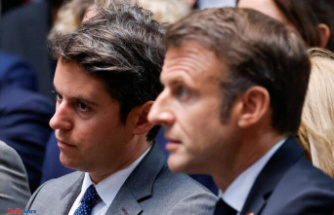Several Museum moved to preserve a slice of history in Washington on Wednesday by taking steps to keep some of the signs protesters strung along a fence near the White House after the death of George Floyd.
After the National Park Service announced that the fence surrounding Lafayette Square, just north of the White House, would be removed on Wednesday, protesters moved a majority of the signs and posters that were on that fence across the street and taped them on construction walls.
MORE: 5 takeaways from the House hearing with George Floyd's brother pleading for policing reformThe fencing blocking Lafayette Park remained up late Wednesday, though, as demonstrator -- including Floyd's brother Philonise Floyd and attorney Ben Crump -- marched through Black Lives Matter Plaza, a recently renamed intersection next to the park that has become a center of protest.
Philonise Floyd (C), brother of George Floyd, accompanied by Benjamin Crump ( R), Floyd family attorney and others rally outside of St. John's Episcopal Church near the White House, to protest police brutality and racism, June 10, 2020, in Washington, DC.Philonise Floyd (C), brother of George Floyd, accompanied by Benjamin Crump ( R), Floyd family attorney and others rally outside of St. John's Episcopal Church near the White House, to protest police brutality and racism, June 10, 2020, in Washington, DC.Jose Luis Magana/AFP via"We are telling the American story from the African American experience," Dwandalyn Reece, a curator at the National Museum of African American History and Culture, who spent hours reading signs and speaking with the protesters, told ABC News. "We recognize the historical significance, we recognize the mood of the country, and it's very important to capture that."
Messages are attached to the security fence on the north side of Lafayette Square, near the White House, June 8, 2020.Messages are attached to the security fence on the north side of Lafayette Square, near the White House, June 8, 2020.Mandel Ngan/AFP viaReece was one of several curators from the National Museum of African American History and Culture, the National Museum of American History and the Anacostia Community Museum -- all part of the Smithsonian Institution in Washington -- who walked down the Black Lives Matter Plaza on Wednesday to speak to protesters about their stories and start the process of preserving posters and other protest-related items.
MORE: As Trump struggles to respond to crises, internal polling instills fear into advisers: SourcesTo capture the whole story, curators are now having conversations with the protesters and looking at what has been posted on the protest signs to get a sense of the stories they plan to tell.
Signs are shown hanging on a police fence at 16th and H Street, June 9, 2020, near the White House.Signs are shown hanging on a police fence at 16th and H Street, June 9, 2020, near the White House.Jacquelyn Martin/AP"It goes way beyond the placards and signs," Reece, the associate director for curatorial affairs, said. "We're going to look at it from a really human perspective, as well as historical, and it's going to have reverberations for years to come."
Due to COVID-19, the collecting process may take longer than usual, according to Reece. To determine what memorabilia they want to keep, each museum wants to talk to potential donors about people who have an interest in seeing the items preserved -- with the stories that the items tell -- for generations to come.
Though the project is still in its early stages, the collection of items will be used for exhibitions, publications, research, educational programs and digital platforms in the near future.
Date Of Update: 14 June 2020, 11:03











